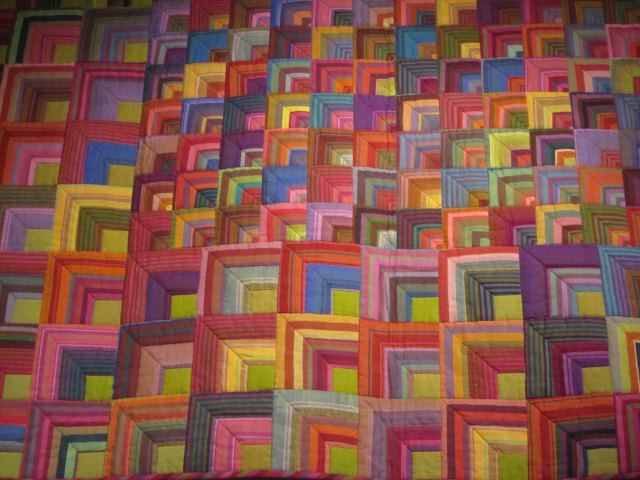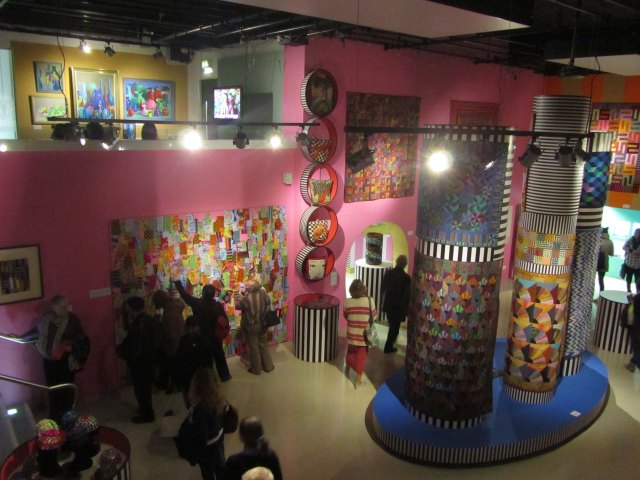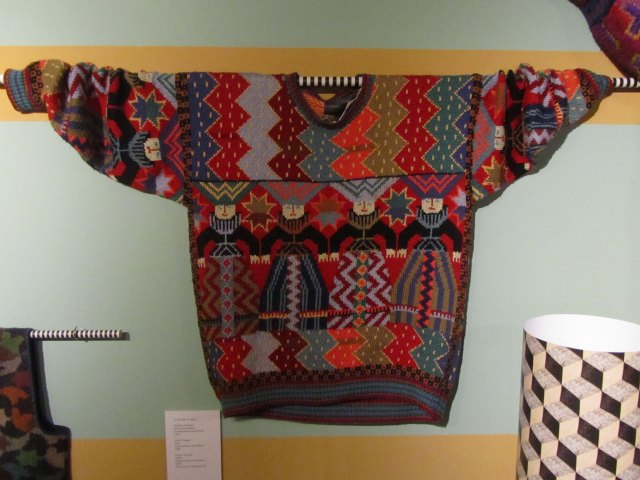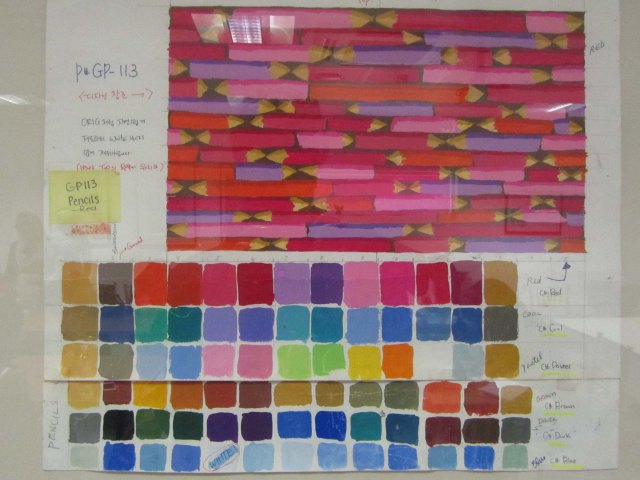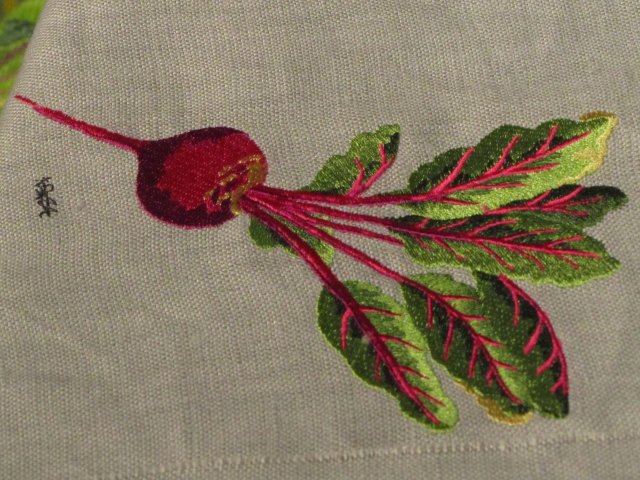I visited this exhibition at Zandra Rhodes’ Fashion and Textile Museum in London this weekend. As a child my family lived in his sweater designs, knitted by my grandmother, and I have therefore been aware of his work in colour and design from an early age. He is a colourist, painter, mosaicist, and designer of knitwear, fabrics, tapestry and patchwork. Complex combinations of colour and pattern within pattern are trademarks of his work, which has been influenced by a lifetime of worldwide travel. The overall presentation of the exhibition had a circus feel with large black and white striped pillars, with work wrapped around them. I liked the ‘feeling wall’ of fabric and knitted samples, an opportunity which is often lacking in textile exhibitions. The pieces worked really well with the boldly painted walls of the FTM.
Kaffe Fassett was born in California, and moved to the UK as a young painter in 1964. His career in textiles started with a train journey to Scotland with a fashion student at St Martin’s college called Bill Gibb. He was inspired by the colours of the countryside and on a visit to a wool mill bought a selection of 20 yarns in these colours. He planned to commission a sweater, but soon realised that he would be unable to communicate how he wanted the colours to be combined. Another friend on the trip taught him to knit on the train journey back, and his first sweater incorporated all 20 colours. Where other designers work to simplify designs to create visual impact, Kaffe layers pattern on pattern to maximise the breadth of the palette used in any one piece. You can clearly see how his travels have inspired his colour choices and motifs in his designs.
Even the simplest designs have a deceptively large number of shades, and designing the different colourways for each design looked mind-boggling.
His pattern design process begins by painting still life compositions with a narrow colour theme. He looks for patterns emerging and develops things from there. His tapestry designs are mainly botanical, and he will start by painting the subject with the aid of reference images. I enjoyed the painterly shadows in his tapestry designs. This is also seen in a series of computerised machine embroideries included in the exhibition.
I have taken a number of notes and photographs on how he has dealt with the edges of his pieces. I was left invigorated by his designs, but also baffled as to how he has managed to make fluorescent hues work adjacent to warm and earthy tones. I will at least be more open to experimenting with brave and bold combinations. I am reminded of the embroidery at WEFT that married magenta and cyan with forest green and burnt sienna.
